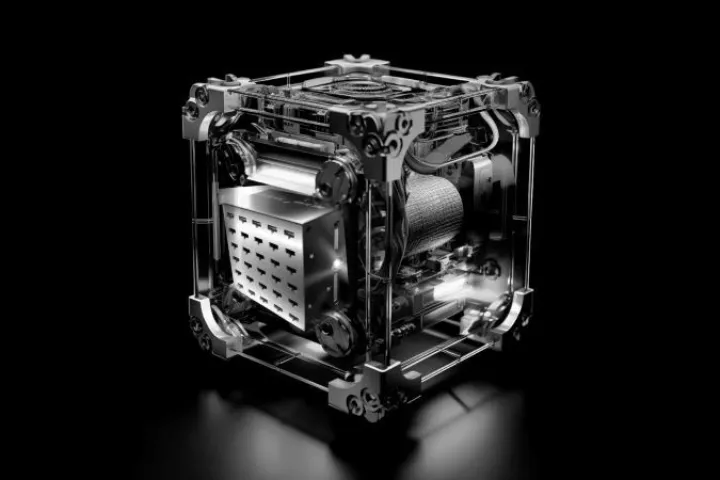ion engine
-
Rocket science got a bit more science-fiction-like as RocketStar announces it has successfully demonstrated a new ion drive that incorporates nuclear fusion. It's not the sort of fusion that powers the Sun, but it does improve thrust by 50%.
-
ESA's BepiColombo spacecraft has fired up all four of its ion thrusters as it begins the first of 22 burn arcs. The engines will fire for two months as they propel the unmanned probe on the start of its 9-billion-km (5.6-billion-mi) journey to explore the planet Mercury.
-
The ion thrusters on ESA's BepiColombo spacecraft have been successfully tested in space as the probe embarks on the first leg of its epic seven-year voyage to the planet Mercury.
-
The ESA-JAXA BepiColombo mission is on its way to Mercury, but instead of coasting to the smallest planet in the Solar System, it will be helped along by four state-of-the-art ion thrusters developed by an industrial consortium led by British company QinetiQ.
-
A team of researchers has come up with plasma beam that can push space debris out of orbit. Mounted on a satellite, the two-way facing beam is produced by a bespoke ion thruster that uses its discharge to decelerate debris so it can burn up in the Earth's atmosphere.
-
Working in coordination with NASA engineers from Glenn Research and the Jet Propulsion Laboratory,Aerojet Rocketdyne says it has completed its early systems integration test of the Advanced Electric Propulsion System (AEPS) 13-kW Hall thruster, clearing the way for further development.
-
NASA's Dawn spacecraft is set to maneuver into a higher orbit around the dwarf planet Ceres. The move to is designed to get a new perspective of the dwarf planet and prolong the already successful mission.
-
NASA has awarded a US$67 million, 36-month contract to Redmond, Washington-based Aerojet Rocketdyne to design and develop an Advanced Electric Propulsion System (AEPS).
-
Dr Patrick Neumann of the University of Sydney has developed a new ion drive as part of his PhD thesis. The drive outperforms the best one devised by NASA and holds the promise of "Mars and back on a tank of fuel."
-
When the unmanned X-37B mission lifts off from Cape Canaveral AFB on May 20, it will be carrying a Hall thruster as part of an experiment to improve the design for use on Advanced Extremely High Frequency (AEHF) military communications spacecraft.
-
NASA's Dawn spacecraft added another trophy today to the conquest of space as it went into orbit around Ceres. According to the space agency, the unmanned probe arrived at about 4:39 am PST and is currently circling the dwarf planet at an altitude of about 38,000 miles (61,000 km).
-
Boeing announced that the two 702SP small platform satellites, called ABS-3A and EUTELSAT 115 West B, that launched on Sunday evening are sending back signals to mission control as they power towards geosynchronous orbit under ion drive.
Load More











